#apache pine
Explore tagged Tumblr posts
Text



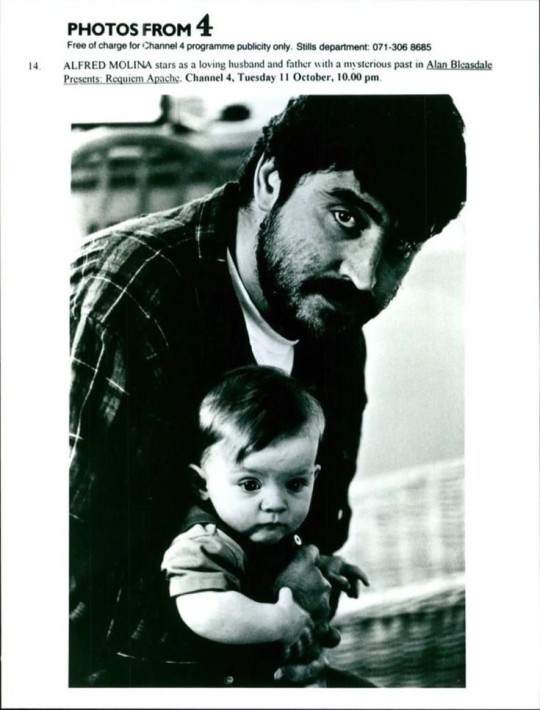
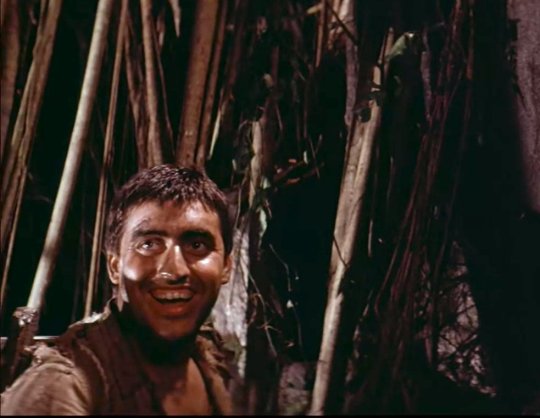




🎉🎉🎉 SUNDAY RANDOMS 🎉🎉🎉
#alfred molina#the davinci code#three pines#armand gamache#law and order los angeles#ricardo morales#roger & val have just got in#indiana jones and the raiders of the lost ark#requiem apache#sunday randoms
119 notes
·
View notes
Photo

Geronimo
Geronimo (Goyahkla, l. c. 1829-1909) was a medicine man and war chief of the Bedonkohe tribe of the Chiricahua Apache nation, best known for his resistance against the encroachment of Mexican and Euro-American settlers and armed forces into Apache territory and as one of the last Native American leaders to surrender to the United States government.
During the Apache Wars (1849-1886), he allied with other leaders such as Cochise (l. c. 1805-1874) and Victorio (l. c. 1825-1880) in attacks on US forces after Apache lands became part of US territories following the Mexican-American War (1846-1848). Between c. 1850 and 1886, Geronimo led raids against villages, outposts, and cattle trains in northern Mexico and southwest US territories, often striking with relatively small bands of warriors against superior numbers and slipping away into the mountains and then back to his homelands in the region of modern-day Arizona and New Mexico.
He surrendered to US authorities three times, but when the terms of his surrender were not honored, he escaped the reservation and returned to launching raids on settlements. He was finally talked into surrendering for good by First Lieutenant Charles B. Gatewood (l. 1853-1896), under the command of General Nelson A. Miles (l. 1839-1925), in 1886. None of the terms stipulated by Miles were honored, but by that time, Geronimo felt he was too old and too tired to continue running. Geronimo's surrender to Gatewood is told accurately, though with some poetic license, in the Hollywood movie Geronimo: An American Legend (1993).
Geronimo was imprisoned at Fort Pickens, Pensacola, Florida, before being moved to Fort Sill, Oklahoma. Toward the end of his life, he became a sensation at the St. Louis World's Fair (1904) and President Theodore Roosevelt's Inaugural Parade (1905) as well as other events. Although one of the stipulations of his surrender was his return to his homelands in Arizona, he was held as a prisoner elsewhere for 23 years before dying in 1909 of pneumonia at Fort Sill.
Name & Youth
His Apache name was Goyahkla ("One Who Yawns"), and, according to some scholars, he acquired the name Geronimo during his campaigns against Mexican troops, who would appeal to Saint Jerome (San Jeronimo in Spanish) for assistance. This was possibly Saint Jerome Emiliani (l. 1486-1537), patron of orphans and abandoned children, not the better-known Saint Jerome of Stridon (l. c. 342-420), translator of the Bible into the Vulgate and patron of translators, scholars, and librarians.
Geronimo was born near Turkey Creek near the Gila River in the region now known as Arizona and New Mexico c. 1825. He was the fourth of eight children and had three brothers and four sisters. In his autobiography, Geronimo: The True Story of America's Most Ferocious Warrior (1906), dictated to S. M. Barrett, Geronimo described his youth:
When a child, my mother taught me the legends of our people; taught me of the sun and sky, the moon and stars, the clouds, and storms. She also taught me to kneel and pray to Usen for strength, health, wisdom, and protection. We never prayed against any person, but if we had aught against any individual, we ourselves took vengeance. We were taught that Usen does not care for the petty quarrels of men. My father had often told me of the brave deeds of our warriors, of the pleasures of the chase, and the glories of the warpath. With my brothers and sisters, I played about my father's home. Sometimes we played at hide-and-seek among the rocks and pines; sometimes we loitered in the shade of the cottonwood trees…When we were old enough to be of real service, we went to the field with our parents; not to play, but to toil.
(12)
After his father died of illness, his mother did not remarry, and Geronimo took her under his care. In 1846, when he was around 17 years old, he was admitted to the Council of Warriors, which meant he could now join in war parties and also marry. He married Alope of the Nedni-Chiricahua tribe, and they would later have three children. Geronimo set up a home for his family near his mother's teepee, and as he says, "we followed the traditions of our fathers and were happy. Three children came to us – children that played, loitered, and worked as I had done" (Barrett, 25). This happy time in Geronimo's life would not last long, however.
Continue reading...
158 notes
·
View notes
Text
May 2024 witch guide
Full moon: May 23rd
New moon: May 7th
Sabbats: Beltane-May1st
May Flower Moon
Known as: Bright Moon, Budding Moon, Dyad Moon, Egg Laying Moon, Frog Moon, Hare Moon, Leaf Budding Moon, Merry Moon, Moon of the Shedding Ponies, Planting Moon, Sproutkale, Thrimilcmonath & Winnemanoth
Element: Fire
Zodiac: Taurus & Gemini
Nature spirits: Elves & Faeries
Deities: Aphrodite, Artemis, Bast, Cernunnos, Diana, Frigga, Flora, Horned God, Kali, Maia, Pan, Priapus & Venus
Animals: Cat, leopard & lynx
Birds: Dove, Swallow & Swan
Trees: Hawthorne & rowan
Herbs: Cinnamon, dittany of Crete, Elder, mint, mugwort & thyme
Flowers: Foxglove, lily of the valley & rose
Scents: Rose & sandalwood
Stones: Amber, Apache tear, carnelian, emerald, garnet, malachite, rose quartz, ruby, tourmaline & tsavorite
Colors: Brown, green, orange, pink & yellow
Energy: Abundance, creative energy, faerie & spirit contact, fertility, intuition, love, marriage, material gains, money, propagation, prosperity, real-estate dealings, relationships & tenacity
May’s Flower Moon name should be no surprise; flowers spring forth across North America in abundance this month!
• “Flower Moon” has been attributed to Algonquin peoples, as confirmed by Christina Ruddy of The Algonquin Way Cultural Centre in Pikwakanagan, Ontario.
May’s Moon was also referred to as the “Month of Flowers” by Jonathan Carver in his 1798 publication, Travels Through the Interior Parts of North America: 1766, 1767, 1768 (pp. 250-252), as a likely Dakota name. Carver stayed with the Naudowessie (Dakota) over a period of time; his expedition covered the Great Lakes region, including the Wisconsin and Minnesota areas.
Beltane
Known as: Beltaine, May day, Roodmas & Cethsamhain
Season: Spring
Symbols: Eggs, faeries, fire, flowers & maypoles
Colors: Blue, dark yellow, green, light pink, orange, red, white yellow & rainbow spectrum
Oils/Incense: Frankincense, lilac, passion flower, rose, tuberose & vanilla
Animals: Bee, cattle, goat & rabbit
Mythical: Faeries
Stones: Bloodstone, emerald, lapis lazuli, orange carnelian, rose quartz & sapphire
Food: Beltane cakes, cherries, dairy foods, farls, green herbal salads, honey, meade, nuts, oat cakes, oats, strawberries & sweets
Herbs/Plants: Almond, ash tree, birch, bramble, cinquefoil, damiana, frankincense, hawthorn, ivy, meadowsweet, mushroom, rosemary, saffron, satyrion root, St.John's wort & woodruff
Flowers: Angelica, bluebell, daisy, hibiscus, honeysuckle, lilac, marigold, primrose, rose, rose hips & yellow cowslips
Trees: Ash, cedar, elder, fir, hawthorn, juniper, linden, mesquite, oak, pine, poplar, rowan & willow
Goddesses: Aphrodite, Areil, Artemis, Cybele, Danu, Diana, Dôn, Eiru, Elen, Eostre, Fand, Flidais, Flora, Freya, Frigga, Maia, Niwalen, Rhea, Rhiannon, Var, Venus & Xochiquetzal
Gods: Baal, Bacchnalia, Balder, Belanos, Belenus, Beli, Beltene, Cernunnos, Cupid, Faunus, Freyr, Grannus, The Green Man, Lares, Lugh, Manawyddan, Odin, Pan, Puck & Taranis
Issues, Intentions & Powers: Agriculture, creativity, fertility, lust, marriage, the otherworld/Underworld, pleasure, psychic ability, purification, sensuality, sex/uality, visions, warmth & youth
Spellwork: Birth, Earth magick, healing, health & pregnancy
Activities:
• Create a daisy chain or floral decorations
• Decorate & dance around a Maypole
• Set up an outdoor altar & leave offerings to faeries
• Prepare a ritual bath with fresh flowers
• Light a bonfire or candles & dance around them
• Set aside time for self care
• Gather flowers & use them to decorate your home or altar
• Prepare a feast to celebrate with friends/family
• Make flower crowns
• Bake bannocks, oat cakes or cookies
• Hang wreaths decorated with ribbons & flowers
• Plant flowers in your garden
• Start a wish book/box/journal
• Go on a walk & gice thanks to nature⁸
• Cast fertility or a bunch spells
• Fill small baskets of flowers & small goodies, then leave them on your friends/neighbors doorstep as a gesture of goodwill & friendship
Beltane is mentioned in the earliest Irish literature and is associated with important events in Irish mythology. Also known as Cétshamhain ('first of summer'), it marked the beginning of summer & was when cattle were driven out to the summer pastures. Rituals were performed to protect cattle, people & crops, and to encourage growth. (Today, Witches who observe the Wheel of the Year celebrate Beltane as the height of Spring.)
Special bonfires were kindled, whose flames, smoke & ashes were deemed to have protective powers. The people and their cattle would walk around or between bonfires & sometimes leap over the flames or embers. All household fires would be doused & then re-lit from the Beltane bonfire.
These gatherings would be accompanied by a feast, and some of the food and drink would be offered to the aos sí. Doors, windows, byres and livestock would be decorated with yellow May flowers, perhaps because they evoked fire.
In parts of Ireland, people would make a May Bush: typically a thorn bush or branch decorated with flowers, ribbons, bright shells & rushlights. Holy wells were also visited, while Beltane dew was thought to bring beauty & maintain youthfulness.
• The aos sí (often referred to as spirits or fairies) were thought to be especially active at Beltane. Like Samhain, which lies directly opposite from Beltane on the Wheel of the Year, this was seen as a time when the veil between worlds was at its thinnest. At Samhain the veil between the worlds of the living & the dead is thin enough that we can connect & convene with our beloved dead, here at Beltane it’s the veil between the human world, and the world of faeries & nature spirits that has grown thin. Offerings would be left at the ancient faerie forts, the wells and in other sacred places in an effort to appease these nature spirits to ensure a successful growing season.
Some believe this is when The Goddess is now the Mother & the God is seen as the Green Man or the wild stag. It celebrates the symbolic union, mating or marriage of the Goddess & God & heralds in the coming summer months. It represents life rather than Samhain on the opposite side of the Wheel of the Year.
Other Celebrations:
• Rosealia- May 23rd
Rosalia or Rosaria was a festival of roses celebrated on various dates, primarily in May, but scattered through mid-July. The observance is sometimes called a rosatio ("rose-adornment") or the dies rosationis, "day of rose-adornment," & could be celebrated also with violets. As a commemoration of the dead, the rosatio developed from the custom of placing flowers at burial sites. It was among the extensive private religious practices by means of which the Romans cared for their dead, reflecting the value placed on tradition (mos maiorum, "the way of the ancestors"), family lineage & memorials ranging from simple inscriptions to grand public works. Several dates on the Roman calendar were set aside as public holidays or memorial days devoted to the dead.
Roses had funerary significance in Greece, but were particularly associated with death & entombment among the Romans. In Greece, roses appear on funerary steles & in epitaphs most often of girls. Flowers were traditional symbols of rejuvenation, rebirth &memory, with the red & purple of roses & violets felt to evoke the color of blood as a form of propitiation
Sources:
Farmersalmanac .com
Llewellyn's Complete Book of Correspondences by Sandra Kines
Wikipedia
A Witch's Book of Correspondences by Viktorija Briggs
Encyclopedia britannica
Llewellyn 2024 magical almanac Practical magic for everyday living
#witch guide#may 2024#flower moon#sabbat#wheel of the year#beltane#beltaine#witchblr#wiccablr#paganblr#witch community#witchcore#witchcraft#witches of tumblr#tumblr witch community#tumblr witches#moon magic#spellbook#grimoire#book of shadows#witch#traditional witchcraft#spellwork#beginner witch#baby witch#witch tips#witch tumblr#baby witch tips#GreenWitchcrafts#witch friends
469 notes
·
View notes
Text
Extended postal abbreviations for North America and some adjacent states and territories
I recently came into possession of a list of postal abbreviations used by the North American Postal Union in the year 2064 for delivering physical mail in the countries and territories it is responsible for. This system takes advantage of the fact that there is no overlap between American and Canadian postal abbreviations, and extends that list with several new additions, principally covering Mexico, Central America, the Caribbean, and various dependent territories--both of other countries, whose territories happen to lie in North America, and of North American states, who happen to have possessions elsewhere.
AA: U.S. Armed Forces - America
AB: Alberta
AC: Agua Caliente Reservation
AE: U.S. Armed Forces - Europe
AG: Aguascalientes
AH: Allegheny Reservation
AI: NAU Antarctic Bases
AK: Alaska
AL: Alabama
AN: Anguilla
AO: Alto California
AP: U.S. Armed Forces - Pacific
AR: Aruba
AS: American Samoa
AT: Antigua and Barbuda
AZ: Arizona
BA: The Bahamas
BC: British Columbia
BE: Belize
BI: Blackfeet Indian Reservation
BJ: Baja California (NO LAUGHING)
BO: Bonaire
BR: Barbados
BS: Baja California Sur
BU: Bermuda
BV: British Virgin Islands
CA: California
CB: Cuba
CC: Curacao
CD: Coeur d'Alene Reservation
CE: Colville Reservation
CF: Canadian Armed Forces
CH: Chiapas
CI: Chihuahua
CJ: Canadian Manchuria
CK: Canadian Kamchatka
CL: Colima
CM: Campeche
CN: Cheyenne River Reservation
CO: Colorado
CR: Costa Rica
CT: Connecticut
CU: Coahuila de Zaragoza
CV: Colorado River Indian Reservation
CW: Crow Reservation
CY: Cayman Islands
CZ: Panama Canal Zone (defunct)
DE: Delaware
DC: District of Columbia
DO: Dominica
DL: Deltaland ("North Louisiana")
DR: Dominican Republic
DT: Enclave of Detroit
DU: Durango
EJ: East New Jersey
ES: El Salvador
FA: Fort Apache Reservation
FB: Fort Berthold Reservation
FH: Fort Hall Reservation
FL: Florida (defunct)
FM: Micronesia
FP: Fort Peck Indian Reservation
FR: Flathead Reservation
GA: GeorgiaHI: Hawaii
GD: Guadeloupe
GE: Grenada
GI: Gila River Indian Reservation
GL: Greenland
GN: Guanajuato
GR: Guerrero
GT: Guatemala
GU: Guam
HA: Haiti
HD: Hidalgo
HI: Hawaii
HO: Honduras
HR: Hopi Reservation
IA: Iowa
ID: Idaho
IK: Independent Kentucky
IL: Illinois
IN: Indiana
IO: Island State of New Orleans
IP: NAU Inner Planets Bases
IR: Isabella Reservation
IS: International Space Station
JA: Jalisco
JM: Jamaica
KS: Kansas
KY: Kentucky
LA: Louisiana (defunct)
LF: Lake Erie Flotilla
LL: Leech Lake Reservation
LT: Lake Traverse Reservation
MA: Massachussetts
MB: Manitoba
MC: Michoacan
MD: Maryland
ME: Maine
MF: Mexican Armed Forces
MG: Montserrat
MH: Marshall Islands
MI: Michigan
MN: Minnesota
MO: Missouri
MP: Northern Mariana Islands
MQ: Martinique
MR: Morelos
MS: Mississippi
MT: Montana
MW: Mississippi Choctaw Reservation
MX: Mexico
MY: Mexico City
NA: Nayarit
NB: New Brunswick
NC: North Carolina
ND: North Dakota
NE: Nebraska
NG: New Jersey (Legitimist Faction)
NH: New Hampshire
NI: Nicaragua
NJ: New Jersey (defunct)
NL: Newfoundland and Labrador
NM: New Mexico
NN: Navajo Nation
NO: Nuevo Leon
NP: Nez Perce Reservation
NS: Nova Scotia
NT: Northwest Territories
NU: Nunavut
NV: Nevada
NY: New York
OA: Oaxaca
OE: Oneida Reservation
OH: Ohio
ON: Ontario
OK: Oklahoma
OO: Ohkay Owingeh
OP: NAU Outer Planets, Satellite, and Asteroid Bases
OR: Oregon
OS: Osage Reservation
OW: Royalist Ottowa
PA: Pennsylvania
PD: Pine Ridge Reservation
PE: Prince Edward Island
PI: Philippine Islands (defunct)
PM: Port Madison Reservation
PN: Panama
PR: Puerto Rico
PS: Puget Sound Arcology
PU: Puebla
PY: Puyallup Reservation
PW: Palau
QB: Qualla Boundary
QC: Quebec
QR: Quintana Roo
QU: Queretaro
RC: Grand Duchy of Reedy Creek
RG: Rio Grande Valley Special Economic Zone
RI: Rhode Island
RL: Red Lake Reservation
RO: Rosebud Indian Reservation
SA: Saba
SB: Saint Barthelemy
SC: South Carolina
SD: South Dakota
SE: Sint Eustatius
SF: Salt River Reservation
SG: Standing Rock Reservation
SK: Saskatchewan
SI: Sinaloa
SJ: Clerical State of the Society of Jesus of Southwest Michigan
SL: San Luis Potosi
SM: Saint Martin
SN: Saint Kitts and Nevis
SO: Sonora
SP: Santa Clara Pueblo
SR: Sint Maarten
SS: San Carlos Reservation
ST: Southern Ute Reservation
SU: Saint Lucia
SV: Saint Vincent and the Grenadines
SW: San Diego-Tijuana Autonomous Republic
SX: Southeast England Occupied Territories
SZ: West Coast Containment Zone
TA: Tabasco
TC: Turks and Caicos Islands
TI: Trinidad and Tobago
TL: Tlaxcala
TU: Tulalip Reservation
TM: Tamaulipas
TN: Tennessee
TO: Tohono O'odham Reservation
TT: Trust Territory of the Pacific Islands (defunct)
TU: Turtle Mountain Reservation
TW: Taiwan
TX: Texas
UB: NAU Undersea Bases
UM: U.S. Minor Outlying Islands
UO: Uintah and Ouray Reservation
UP: People's Democratic Republic of the Upper Peninsula
UT: Utah
VC: Veracruz
VD: Vancouver Reclamation District
VE: Vermont
VA: Virginia
VI: U.S. Virgin Islands
WA: Washington
WE: White Earth Reservation
WV: West Virginia
WI: Wisconsin
WL: Mandatory Wales
WJ: West New Jersey
WR: Wind River Reservation
WY: Wyoming
YA: Yankton Reservation
YO: Associated State of York
YT: Yukon Territory
YN: Yakama Nation Reservation
YU: Yucatan
ZA: Zacatecas
ZU: Zuni Reservation
47 notes
·
View notes
Text
best films of 2023
new releases
may december (todd haynes)
pacifiction (albert serra)
showing up (kelly reichardt)
master gardener (paul schrader)
trenque lauquen (laura citarella)
knock at the cabin (m. night shyalaman)
afterwater (dane komljen)
music (angela schanelec)
jawan (atlee)
in our day (hong sang-soo)
discoveries
o'er the land + the illinois parable (deborah stratman, 2009/2016)
the grapes of wrath + my darling clementine + forte apache + wagon master (john ford, 1940-1950)
history lessons + from the clouds to the resistance + the return of prodigal son + these encounters of theirs (jean-marie straub + danièle huillet, 1972/1979/2003-2006)
colossal youth + horse money (pedro costa, 2006-2014)
gang of four + up down fragile (jacques rivette, 1989-1995)
pine flat + PODWORKA (sharon lockhart, 2006-2009)
the sunchaser (michael cimino, 1996)
way of gaucho (jaqcues tourneur, 1952)
city of hope + lone star (john sayles, 1991/1996)
detours (katya selenkina, 2021)
at sea + three landscapes (paul b. hutton, 2007-2013)
public housing (frederick wiseman, 1997)
11x14 + el valley centro + los + sogobi (james benning, 1977/1999-2002)
here and elsewhere (jean-luc godard, 1976)
walking and talking (nicole holofcener, 1996)
my friend ivan lapshin (aleksey german, 1984)
angel dust (gakuryu ishii, 1994)
acto da primavera (manoel de oliveira, 1963)
love me tonight (rouben mamoulian, 1932)
wild side (donald cammell, 1996)
trois ponts sur la rivière + saltimbank (jean-claude biette, 1999-2003)
public enemies (michael mann, 2009)
blue diary + the joy of life (jenni olson, 1997/2005)
+ full list on letterboxd 💌
27 notes
·
View notes
Text
We go down from gravel and shaggy rope of juniper.
We go down and water rises through trunks of white pine, the first green grass in the gullies.
We go down and our eyes sink and dilate below the surface.
We go down and feel water thicken and hiss along banks of Apache creek.
We go down through the grammar of night—cinders blinking out under soil, furrows in bark strung with tightropes of silk. Buds of cottonwood let loose their sticky smell of rain.
We go down and sift and scan the dusk, the first morels diving up through duff.
We go down and inhale their honeycomb musk, fruits of lightning under soil, mineral sugar.
We go down with our tongues silent, tucked like snails sealed in the caves of our mouths.
We go down with our owl-ears open, sifting through the slow sleep of moss, spores wafting through hollows.
We go down to meet the night rising in the green bottom of the canyon.
We go down and the buried tentacles of our bodies unfurl like white petals that only open in dark.
Early spring, last light, we go down by Anne Haven McDonnell
10 notes
·
View notes
Note
Any flowers you associate to Alvah, Irae and Yew? Asking for no reason in particular 👀
👀
Wait this is such a fun question tho!! Lemme think....
Well Irae is a classic rose/ wilted rose, briars, ghost orchid? The spookier gothic feeling flowers
Yew is lily of the valley, mistletoe, pine, yew (of course) / any white or snowy feeling flower
Alvah I haven't thought about before! Castilleja Applegatei for sure, maybe some desert globemallows? red yucca? Apache plumes? wild desert flowers are all on the table
But yeah that's about it! This was a fun one to think about and honestly I'm happy to hear about any flower you think would suit my characters!!
3 notes
·
View notes
Text
Ep 269: The Hitchhiker of Mogollon Rim
"The trickster is found worldwide. Superficially, his tales seem little more than entertaining stories for children, but they encode important truths. The trickster is central to many religious beliefs, and some of the tales are sacred. In fact, a number of cultures permit only a few persons to tell the stories and restrict when they can be told because they have a power of their own." -- "The Trickster and the Paranormal," by George P. Hansen
Description:
The Mogollon Rim in northcentral Arizona is a geological landform that spans around 200 miles east to west, demarking the southern boundary of the Colorado Plateau in the state. This topographical feature is classified as an escarpment where wide and steeply sloping cliffs and rock masses delineate the high pine-covered plateau on the northern side, which receives cold winter temperatures and light snow from the desert-like conditions below to the south. This transitional nature provides a habitat for significantly varying types of plants and animals. Perhaps because of Mogollon Rim’s liminal nature, this variance is claimed by many to also extend to creatures and phenomena that dwell beyond our understanding. Accounts and legends of UFOs, supernatural occurrences, and even its own brand of a hominin-like beast known as the “Mogollon Monster” are familiar to the territory. The supernatural element became all too real for our guest, Jay, who endured a terrifying encounter while working as a wildlife biologist for the Arizona Game and Fish Department. While studying black bears in the rugged canyons and terrain of the Rim, Jay encountered an impossible stranger in a pretty unlikely place, one that insisted on getting a ride. But who or what was this thing, and what was their intention? An ancient spirit known to the Native American cultures of the region or a physical being with mystical powers masquerading as a weird human? While it is never advisable to pick up strangers, it seems that one may be compelled to give a ride to a hitchhiker on Mogollon Rim, maybe as just a playful reminder that humans are not the apex of the paranormal food chain.
Reference Links:
CLICK HERE to listen to “Astonishing Al’s Mix Tape” on Spotify
CLICK HERE to listen to “Astonishing Legends Creepit” – a curated collection of our creepiest episodes on Spotify!
Mogollon Rim on Wikipedia
Mogollon culture on Wikipedia
Navajo
Escarpment
Madrean Sky Islands
Sky island
“Mogollon Monster 100” trail race
Mogollon Monster
The Mogollon Monster from Weird U.S.
“Bigfoot sightings abound in early Rim Country history” from the Payson Roundup, Tuesday, March 1, 2016
“Arizonan Legends” from the Horizon Sun, April 1, 2017
“Rim Country Places” from the Rim Review, January 22, 2014
“Ask Clay: Gather round for tales of the Mogollon Monster” from azcentral.com
“Searching for the Mogollon Monster” from Williams - Grand Canyon News
“Story, video: Apaches go public with Bigfoot sightings: 'It cannot be ignored any longer'“ from Tucson.com
“40 years later: Most documented UFO sighting, abduction still draw interest” from the White Mountain Independent
The Mogollon Monster YouTube channel
“The Legend Of The Mogollon Monster In Arizona May Send Chills Down Your Spine” from Only in Your State
Arizona Game & Fish Department
Location:
Mogollon Rim, Arizona
Suggested Listening:
Badlands
Badlands is an anthology series that blends history and true crime to tell the transgressive stories of some of the biggest names in Hollywood. This is not the Hollywood history you’ve heard before. These are uncensored, immersive, edge-of-your-seat storytelling. Host Jake Brennan, creator and host of the award-winning music and true crime podcast DISGRACELAND, explores the most insane stories surrounding the world’s most interesting Hollywood icons. Badlands has covered many actors, directors, and more, including the mysterious deaths of Marilyn Monroe and Natalie Wood... Tim Allen’s former career as a low-level drug dealer... the curse of the movie Poltergeist... how porn star John Holmes got caught up in the infamous Wonderland murders... and more episodes on Winona Ryder, Johnny Depp, River Phoenix, Gianni Versace, Robin Williams, Heath Ledger, Sharon Tate, Robert Downey Jr., and so many more. New episodes of Badlands are released every Wednesday, with bonus episodes released every Friday. Subscribe to Badlands on Apple Podcasts, Spotify, the iHeartRadio app, AmazonMusic, or wherever you get your podcasts.
Opening the Doors
Hear Forrest as a guest on our good friend Bradley Netherton’s podcast, Opening the Doors, all about the legendary band with Jim Morrison! This episode covers all the mentions of The Doors on The Simpsons animated series.
KLU Podcast – Keep Looking up
CLICK HERE for Persephone Holloway’s podcast, KLU “Keep Looking Up” on Podbean
Persephone May Holloway’s music on Spotify
Southern gothic podcast
Listen to our good friend Brandon Schexnayder’s Southern Gothic podcast, featuring Forrest narrating Edgar Allen Poe’s poem, Annabelle Lee
Find us on YouTube!
Click this text to find all Astonishing Legends episodes and more on our Youtube Channel https://www.youtube.com/c/Astonishinglegends
Join us on Patreon!
Click HERE or go to patreon.com/astonishinglegends to become one of our Patreon members and receive exclusive offerings, like our bonus Astonishing Junk Drawer episodes (posted every weekend the main show is dark) commercial-free episodes, and more!
SPECIAL OFFERS FROM OUR SPECIAL SPONSORS:
FIND OTHER GREAT DEALS FROM OUR SHOW’S SPONSORS BY CLICKING HERE!
CREDITS:
Episode 269: The Hitchhiker of Mogollon Rim. Produced by Scott Philbrook & Forrest Burgess; Audio Editing by Sarah Vorhees Wendel of VW Sound. Music and Sound Design by Allen Carrescia. Tess Pfeifle, Producer and Lead Researcher. Ed Voccola, Technical Producer. Research Support from The Astonishing Research Corps, or "A.R.C." for short. Copyright 2023 Astonishing Legends Productions, LLC. All Rights Reserved.
#2023#267#nightmare#Legend#Tim Curry#Palm Reading#Palmistry#demon#devil#lucid dream#Baltimore#Ring Around the Rosie#Persephone#vision#Philadelphia#Washington Crossing#New Jersey#Stone Tape Theory#Revolutionary War#Civil War#UFO#UAP#abduction#Missing Time#alien#Nordic#Fae#Faeries#Mount de Sales Academy#268
3 notes
·
View notes
Text
Wednesday 28th June 2023
Three surprises: firstly the Australian Pinot Grigio was ok, secondly an error message came up on the Toyota telling us we have a slow puncture, possibly, and thirdly it was 34 degrees today! In Canada!
Naramata was founded in 1907 by a highly successful Irish born soft fruit farmer, John Moore Robinson. He was offering acreage to people interested in fruit ranching. The new town was to be built for people of good character, no riff raff. And that is by all accounts pretty much the way it still is today. It is the thinking man's Penticton; large town down the road.
About the same time as all this, the Kettle Valley Railway was being constructed linking Naramata to Hope where we came from yesterday. The name of the town has a interesting story behind it. Our John Moore Robinson had a bit of an interest in spiritualism and the wife of the local postmaster, Mrs Anna Gillespie, was a prominent medium. In a seance she channelled the voice of the Sioux Indian Chief Big Moose. The Chief spoke of his dear wife 'Narramattah', calling her the 'Smile of Manitou '. Robinson was moved by all this and the name stuck. Naramata, not Big Moose. Interesting thing was that Mrs Gillespie was caught up in the San Francisco earthquake, so she clearly didn't see that one coming!
Well enough of all that. Naramata is a cumly little town and anyone with a few bob would find it highly agreeable. We just needed a few things to do in the short time we are here. The local museum equipped us with a little map and a few ideas. We rejoined therefore the Kettle Valley Railway trail just up the road and walked 7 km along it as far as the tunnels and then 7km back. A British engineer, Andrew McCulloch, apparently designed it in 1910 but the really impressive part of it is that a) it was built at all and b) the skill and sheer hard graft involved in building it. Men came from Italy, Scandinavia and central Europe and it is said it took black powder and muscle to build it. Today it is a fantastic recreational facility so high up above the Lake Okanagan with such great views across it. We were regularly overtaken by cyclists buzzing along the wide gravel avenue of Apache Pines. It felt very Mediterranean as the sun beat down and we were engulfed by the strong perfume of the pine forest which hung heavily on the breeze and all in peace and total silence save for the scrunch our feet made on the gravel path. Unlike the Mediterranean, there were no Cicadas chirping in the undergrowth.
High scores for bird watching. Red Tailed Hawk, Pileated Woodpecker, Barn Swallows and a female Hummingbird!
Bryson, who always has high praise and a passion for Great Britain says that we might be a very small, over populated country but we all too often underate what we have. He says that we might not have the highest mountains, the largest lakes, the longest rivers, but what we have is an awful lot of fantastic stuff packed into a very small space. What we have witnessed here is a sort of Great Britain on steroids. Huge mountains, massive lakes and vast rivers. What we have seen so far is totally mind boggling and we can't wait to see even more.
ps. We went to get some more of the Australian Pinot Grigio from the local very expensive store and they've run out, completely!!!! So now we are down to cheap Australian Riesling!!! Not sure how Martine will cope with that!
We will have better economic choice when we can get to a saver supermarket.
pps No bears on the trail, but apparently we have something else to worry about now. Rattlesnakes have been spotted! I don't know about anyone else, but sucking venom from a third party backside would truly make it a memorable holiday.
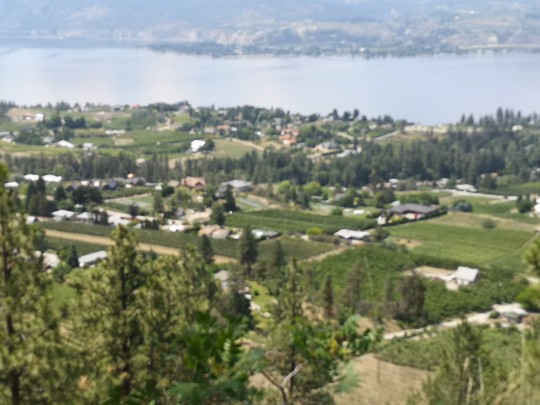
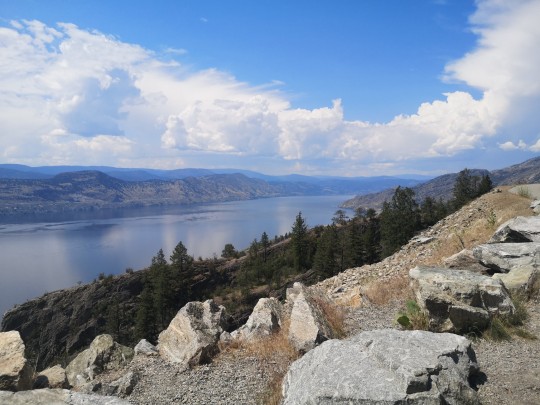
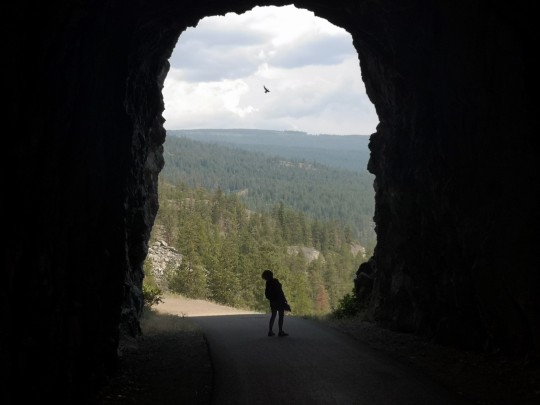
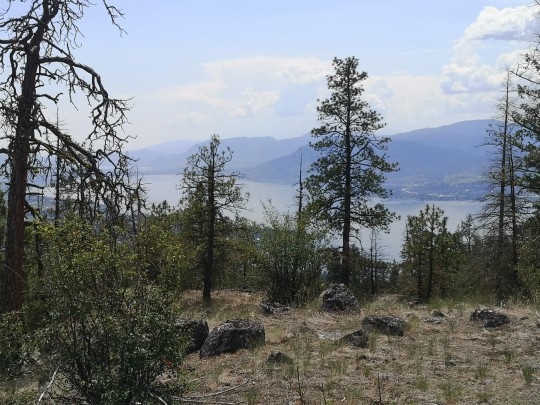
4 notes
·
View notes
Note
i hope you guys have been having a lovely day! i was wondering if i could get some male fc recs for a biker type of vibe? anyone that could be 27+ would work! thanks so much!
Emilio Rivera (1961) Mexican - Mayans MC.
Benjamin Bratt (1963) Peruvian of Quechua descent / German, English.
Michael Irby (1972) African-American / Mexican - Mayans MC.
Rick Gonzalez (1979) Dominican and Puerto Rican.
JD Pardo (1980) Argentinian / Salvadorian - Mayans MC.
Ryan Gosling (1980) - The Place Beyond the Pines.
Brett Goldstein (1980) Ashkenazi Jewish.
Ricky Whittle (1981) Afro-Jamaican / English.
Joe Taslim (1981) Chinese Indonesian.
Boyd Holbrook (1981)
Riz Ahmed (1982) Pakistani - Sound of Metal.
Gabriel Luna (1982) Mexican and Lipan Apache.
Alan Ritchson (1982)
Michael Malarkey (1983) Palestinian, Italian-Maltese / Irish, German.
Chris Hemsworth (1983)
Ed Skrein (1983) Ashkenazi Jewish / possibly English.
Bobby Wilson (1984) Sisseton-Wahpeton Oyate Dakota Sioux.
Theo James (1984)
Richard Cabral (1984) Mexican - Mayans MC.
Clayton Cardenas (1985) Mexican, some Filipino - Mayans MC.
Alex Meraz (1985) Mexican of Purepecha descent.
Cooper Andrews (1985) Samoan / Hungarian Jewish.
Martin Sensmeier (1985) Tlingit, Koyukon, Eyak, German and Irish.
Roman Reigns (1985) Samoan, distant English / Italian and English.
Luke Mitchell (1985)
Peter Gadiot (1986) Mexican / Dutch, some French - Queen of the South.
Bobby Soto (1986) Mexican and Puerto Rican.
Robert Pattinson (1986)
Amar Chadha-Patel (1986) Punjabi and Gujarati Indian.
Casey Deidrick (1987)
Uraz Kaygılaroğlu (1987) Turkish - Üç Kurus.
Desmond Chiam (1987) Chinese Singaporean.
Lewis Tan (1987) Singaporean Chinese / British.
Arifin Putra (1987) Indonesian, Chinese, and German.
İlhan Şen (!987) Turkish.
Tyler Lepley (1987) African-American.
Nick Sagar (1988) Afro Jamaican and Indo Guyanese.
Daniel Kaluuya (1989) Ugandan.
Jesse Rath (1989) Goan Indian / Ashkenazi Jewish.
Chai Hansen (1989) Thai / White.
Rob Raco (1989) - Riverdale.
David Castañeda (1989) Mexican.
Kiowa Gordon (1990) Hualapai, English, Scottish, Danish, Manx - Blood Quantum.
Çağatay Ulusoy (1990) Turkish.
Serkay Tütüncü (1991) Turkish.
Alexander Hodge (1991) Chinese Singaporean / Irish.
Tyler Posey (1991) Mexican / English, Scottish, Irish, German, distant French - is queer and sexually fluid.
Danny Ramirez (1992) Mexican and Colombian.
Jordan Rodrigues (1992) Filipino.
Drew Ray Tanner (1992) Chinese, Afro-Jamaican, French-Canadian, possibly other.
Here you go!
3 notes
·
View notes
Text
The Lakota and Comanche were both aggressive imperialest powers too, It is just that the USA was bigger and better at it. For most native Americans, people not of their own tribe were not real human beings. That is true of most tribal cultures throughout history. For Example in their Native language Comanche means "human beings." Their empire was known as the Comancheria, from the 1750s to the 1850s, the Comanches were the dominant group in the Southwest and developed their own form of imperialism. Confronted with Spanish, Mexican, and U.S. outposts on their periphery in New Mexico, Texas, Louisiana, and Mexico, they fought to increase their own safety, prosperity and power. Their masterful skill as horse archers enabled them to dominate their neighbors until the Texas Rangers adopted Colt revolvers and equalized the combat. Disease was the single most dangerous threat to Native Americans. The Comanche managed to avoid disease, which gave them an upper hand over the Apaches and other tribes in this area. The great western film, The Searchers, is about the Comanche not the Lakota. The Lakota who had been an allies of the United State against other native peoples, were vaccinated against small pox and then exploited their superior numbers to expand at the expense of their less fortunate neighbors the Pawnee and Crow.
Ask the Crow or Pawnee people about how the Lakota invaded and stole their land. The nickname Sioux, meaning enemies, was given to them by their neighbors. The film Dances with Wolves also makes The Lakota invading and killing the Pawnee look like self defense. I have visited the Pine Ridge Lakota reservation in South Dakota, and did a portrait, from old photographs, of one of their chiefs for a school named after him. I did some reasearch on the old warrior and found out that he and his braves had once found a Pawnee village with the men away hunting and were just about to begin massacring the helpless women and children when the US cavalry arrived in the nick of time to stop them.
So the white folk of the USA were no better or worse than other peoples, they were just more successful.

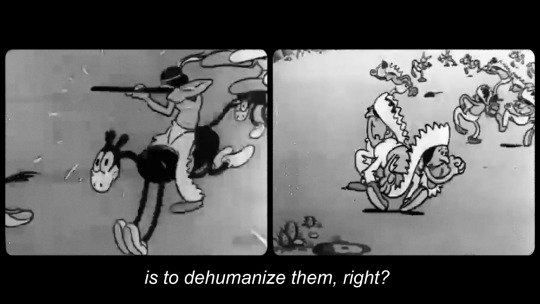
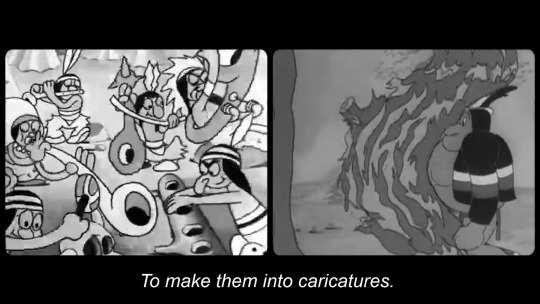
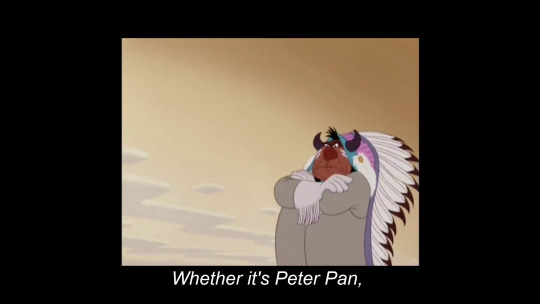


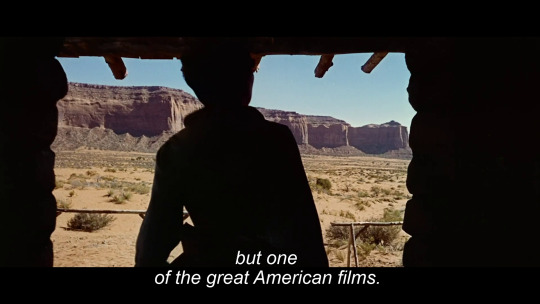
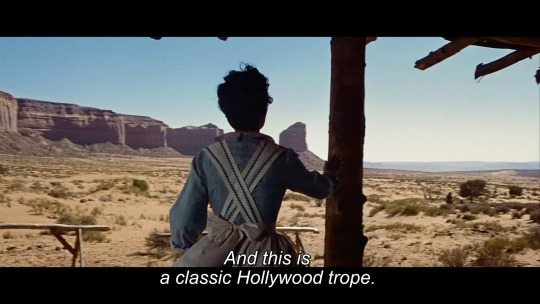

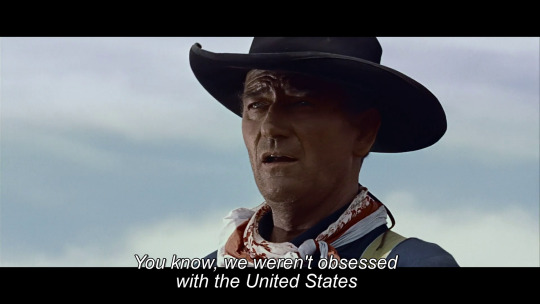
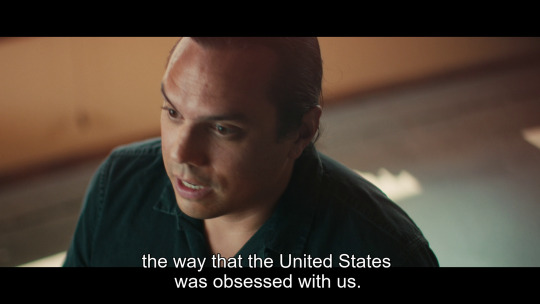
Lakota Nation vs. United States (Jesse Short Bull & Laura Tomaselli, 2022)
57K notes
·
View notes
Text
🌲 Something is out there… Watching. Waiting. 👀
The forests of Arizona hold more than just breathtaking scenery—they hide a legend whispered in fear. Witnesses speak of a towering, bloodthirsty humanoid, covered in tangled hair, with glowing eyes and claws sharp enough to tear flesh. Some say it’s a lost species, others believe it’s something far worse…
🎙️ In this episode of Legends May Live, we explore FOUR terrifying encounters with the Mogollon Monster, Arizona’s own cryptid mystery: 🔥 A blood-drinking beast spotted in 1903 🔥 A Boy Scout’s night of terror in 1944 🔥 A modern-day shadow in the pines (2020) 🔥 Mass sightings by the White Mountain Apache Nation (2006)
These stories only get more disturbing as they go… Will YOU make it to the end? 🎧
💬 Do you believe in cryptids? Ever had a creepy encounter in the woods? Share your story in the notes!
#legendsmaylive#mogollon monster#cryptid#scary stories#unexplained#bigfoot#creepyencounters#paranormal#arizona
0 notes
Text
**Whispers of the Mountains: The Gaan Spirits in Apache Culture**
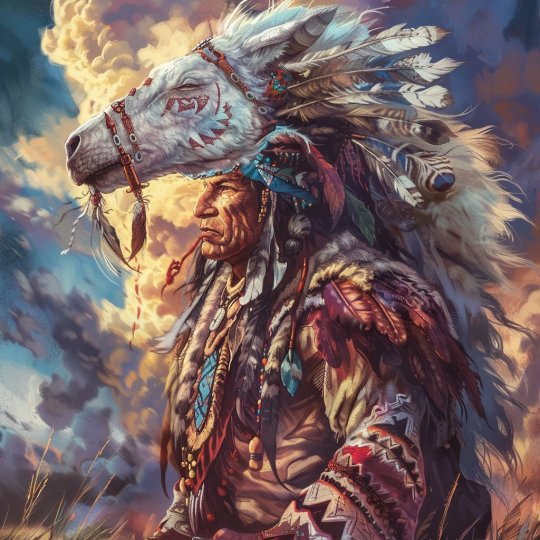
Image generated by the author
What if the mountains could speak? What if the very essence of the towering peaks, the rustling pines, and the swirling winds held stories, wisdom, and guidance? For the Apache people, this is not just a fanciful notion; it is a profound reality steeped in their cultural and spiritual beliefs. The Gaan Mountain Spirits are more than mere folklore; they are the guardians of the Apache identity, embodying the spirit of the land and the natural world that surrounds them.
Cultural Spirits: The Heart of Apache Beliefs
Imagine standing at the foot of a majestic mountain, its rugged cliffs rising high into the sky, clouds swirling around its summit. As you take a breath, the air is rich with the scent of damp earth and pine needles. In this sacred space, the Gaan Mountain Spirits are said to be present. These spirits are integral to Apache culture, representing powerful forces that shape their spirituality and identity. They are guides, protectors, and symbols of balance, embodying the interconnectedness of life and nature.
The Gaan are not just ancient stories told by the flickering light of a campfire; they are actively engaged in the lives of the Apache people. Elders often recount tales of the mountains communicating with those who listen closely, reminding the community of their deep relationship with the environment. This connection fosters respect and reverence for nature, teaching the Apache about harmony and balance in a world that often feels chaotic.
The Cultural Significance of the Gaan
Apache ceremonies are vibrant celebrations filled with dance, song, and prayer, invoking the Gaan to bless their rituals. These practices are not only communal bonding experiences; they are also profound expressions of identity and resilience. Every beat of the drum echoes the heartbeat of the earth, and every song sung is a tribute to the spirits that watch over them.
Through the lens of these rituals, the Apache learn invaluable lessons about unity and cooperation. The Gaan instill comfort and strength, serving as mediators between humans and the natural world. In a society that often prioritizes individualism, the Apache experience teaches the importance of community and the interconnectedness of all living things.
Historical Context: Guardians of the Land
Historically, the Gaan Mountain Spirits have been revered as guardians of the land, holding wisdom and power that transcend generations. The mountains are sacred spaces where these spirits actively interact with the environment, reminding the Apache of their responsibility to protect the earth and its resources.
Through storytelling and oral traditions, families pass down experiences and encounters with the Gaan, preserving cultural beliefs and nurturing community identity. Stories of ancestors who sought guidance from the Gaan during times of hardship serve as powerful reminders of resilience and strength. The mountains are not just physical landscapes; they are living entities imbued with spirit and significance.
Rituals of Connection: Weaving the Gaan into Daily Life
Apache spiritual practices are rich with mythology and communal rituals that integrate the Gaan into everyday life. During ceremonies, dancers don special masks representing the Gaan, embodying their connection to the spirit world. Each movement tells a story, a dialogue between the human and the divine, conveying ancestral teachings.
One such powerful narrative is that of a healer named Niki. As she prepares for a sacred ritual to summon the Gaan, her hands deftly gather herbs, each one carefully selected for its healing properties. The air is thick with anticipation, the scent of sage wafting through the sacred space. Niki and her helpers chant prayers, invoking the spirits to come forth and share their wisdom. This story illustrates the importance of listening to nature, emphasizing that true healing requires respect for the earth and its voice.
Expert Insights: The Role of Gaan Spirits
Cultural experts like Dr. Brian Burton and Mary V. Ray emphasize the significance of the Gaan Mountain Spirits in Apache spirituality. They serve as essential figures, reinforcing the deep connection between humans and nature. Understanding these spirits is central to Apache identity and the preservation of their traditions.
The Gaan teach the Apache about balance, not just within their community but also in their relationship with the land. They remind the people that every action has consequences, urging them to tread lightly and honor the earth. This perspective is increasingly relevant today, as environmental concerns grow and the need for sustainable practices becomes urgent.
Practical Applications of Gaan Teachings
The teachings of the Gaan extend beyond spiritual rituals; they offer practical applications that can enhance community practices and foster harmony within families. By incorporating stories about these spirits into educational programs, Apache youth can connect with their heritage and understand the importance of stewardship over the land.
Healing rituals rooted in Gaan traditions can uplift spirits and promote emotional well-being, providing a framework for individuals to navigate life’s challenges. Sharing stories about the Gaan strengthens familial bonds and cultural identity, reminding the community of their shared history and collective responsibility.
Modern Relevance: The Gaan in Contemporary Life
In today’s fast-paced world, the Gaan Mountain Spirits continue to guide the Apache people through modern challenges. They serve as a reminder of the importance of nature and interconnectedness, inspiring justice, healing, and resilience. The spirits encourage the Apache to reflect on their sacred duty to protect the earth and foster harmony within their communities.
As climate change and environmental degradation threaten the planet, the teachings of the Gaan resonate more than ever. They offer a lens through which to view the world—not as a collection of resources to exploit, but as a living entity deserving of respect and care. The Gaan remind us that our well-being is intertwined with the health of the earth, urging a return to practices that honor the natural world.
Conclusion: Embracing the Wisdom of the Gaan
The Gaan Mountain Spirits embody the essence of Apache spirituality and identity, symbolizing resilience, wisdom, and guidance. Through their narratives and teachings, they shape the Apache worldview, fostering a sense of responsibility for the land and one another.
As we reflect on the Gaan, we are invited to consider our own relationships with nature. What lessons can we learn from the mountains? How can we honor the earth in our daily lives? By embracing the wisdom of the Gaan, we cultivate balance and harmony not only within ourselves but also within the larger community of life that surrounds us.
In a world that often feels disconnected, the Gaan offer profound insights into the importance of listening—to each other, to the land, and to the spirits that dwell within it. As we navigate our own journeys, let us remember the sacred teachings of the Gaan and seek to foster a deeper connection with the world around us.
Glossary of Apache Terminology
To enrich your understanding of Apache spirituality and culture, here are some key terms:
Diyin: Holy People, spiritual figures in Apache belief.
Tséyi’: Canyon, a significant natural feature in Apache territory.
Nílch’i: Air, illustrating the connection between all living things.
Further Exploration and Resources
As you ponder the relevance of traditional practices in modern society, consider exploring deeper questions about indigenous knowledge and ancestral teachings in personal growth. For more insights on reconnecting with nature’s wisdom, subscribe to our newsletter for additional resources and stories that honor the rich tapestry of Apache culture.
In the end, the Gaan Mountain Spirits are a call to remember our place in the natural order and to act with intention and respect for the earth and its myriad inhabitants.
AI Disclosure: AI was used for content ideation, spelling and grammar checks, and some modification of this article.
About Black Hawk Visions: We preserve and share timeless Apache wisdom through digital media. Explore nature connection, survival skills, and inner growth at Black Hawk Visions.
#BlackHawkVisions#Apache Culture#Gaan Mountain Spirits#Native American Spirituality#Mountain Folklore
0 notes
Text
The Great Outdoors: Camping and Outdoor Recreation Near Phoenix

When immersing oneself in the great outdoors, Phoenix, Arizona, is an ideal gateway to various camping and outdoor recreation experiences. From tranquil desert landscapes to lush mountain retreats, here's a guide to outdoor havens that promise adventure and relaxation.
1. Tonto National Forest: A Wilderness Escape
Tonto National Forest, located just northeast of Phoenix, is a sprawling expanse that offers a diverse range of camping experiences. Whether you prefer lakeside camping at Roosevelt Lake or the solitude of the Apache Trail dispersed camping areas, Tonto National Forest provides a serene backdrop for reconnecting with nature.
2. McDowell Mountain Regional Park: Desert Oasis
McDowell Mountain Regional Park is an excellent choice for those seeking a desert escape with panoramic views. Campsites are nestled against the backdrop of the McDowell Mountains, offering hiking and mountain biking trails for daytime adventures. As night falls, the clear desert skies provide a breathtaking canvas for stargazing.
3. Lost Dutchman State Park: Legends and Campfires
Named after the fabled Lost Dutchman's Gold Mine, this state park offers a blend of history and outdoor recreation. Campers can set up beneath the iconic Superstition Mountains and explore trails that wind through the Sonoran Desert. As evening descends, gather around a campfire and immerse yourself in the rich tales of the Lost Dutchman legend.
4. White Tank Mountain Regional Park: Desert Beauty and Petroglyphs
White Tank Mountain Regional Park, known for its ancient petroglyphs and rugged beauty, is a haven for outdoor enthusiasts. Campers can choose from campsites surrounded by saguaro cacti and picturesque desert landscapes. The park's extensive trail system invites exploration, and the Waterfall Canyon Trail is a must-visit for a refreshing outdoor adventure.
5. Lake Pleasant Regional Park: Lakeside Serenity
Lake Pleasant Regional Park offers a camping experience with a waterfront view. With numerous campgrounds dotting the shoreline, campers can enjoy water activities during the day, from boating to fishing. The desert sunsets reflected on the lake create a magical atmosphere, perfect for unwinding around the campfire.
6. Usery Mountain Regional Park: Hiking and Desert Flora
Usery Mountain Regional Park is a hidden gem offering a diverse landscape of desert flora and mountainous terrain. Campers can choose sites surrounded by the unique beauty of the Usery Mountains. The park's extensive trail system caters to hikers of all levels, providing an opportunity to witness the desert's vibrant plant life up close.
7. Payson: A Mountain Escape
Venture northeast of Phoenix to the town of Payson for a mountain retreat. Surrounded by the Tonto National Forest, Payson offers campgrounds amidst towering pine trees. Escape the desert heat and enjoy a cooler climate, with ample opportunities for hiking, fishing, and simply basking in the tranquility of the forest.
In conclusion, Phoenix and its surrounding areas provide a tapestry of outdoor experiences, from the vastness of the desert to the calm serenity of mountain retreats. Whether you're a seasoned camper or a novice outdoor enthusiast, these destinations offer a chance to disconnect from the hustle and bustle, embrace nature, and create lasting memories under the Arizona sky.
0 notes
Video
youtube
Battlefleet Gothic: Armada - Launch Trailer
i got his message. we need jaeger for saturn etc an made tons yes and ours. his design. use it. it works. tons can make it bja has huge factories makes otns of them and the apache type stuff mods. and wwe see it. the osprey mostly for space. rules but need these badly see it. are tough. real tough ram and nope. we need it. now.
trump
we use this and more for motivation need comicon and parades this rules. and gasparrilla and yes it is in december we can make several. and real boats. this rules. and yeh like this look like spanish gallions. need this now wow. good.
and weill do it now
jose gaspar
we know it too this is cool. they are real. see it too. pine lisland
yellow beard and yeh it is me ahahah lol
red beard me
terry c and you were foled
and i am not blackbeard but have a name. and i am feared throughout the lands ok
long john silver
Olympus
0 notes
Text
yes! Conceptkin plantkin and Objectkin don't get much rep in the otherkin community :( so I'll gladly do my part and share some of my experiences. Just a note that I've only recently looked into being concept and object kin myself. For me, there seems to have been stages of realizing I identify as objectkin. First there was hearing that it's even a thing. With a big of skepticism but mostly just thinking it's cool, (same with conceptkin) then a while later I can to terms that I might be Objectkin, and to describe that time, I'll say that I was laughing while saying "I might identify as a chair" it was funny to me. I am know to laugh at myself not in a bad way tho. Then I was excited, and then sad because of the people laughing at Objectkin and say we aren't valid. Then I was just angry because they haven't even asked us about our experiences to understand us better. Then comes acceptance with a side of being sad that there isn't much representation. Now onto my concept and object kintypes: as the cabincore aesthetic at least that's how i call myself, I am the warmth of a cozy blanket, I am a fireplace and it's fire, i am the logs strored in the basement and the cold dewy morning in the pine forest classing with you in your fuzzy pjs as you look out the window and think, while siping from your peppermint tea thats slowly get cold. I am that erge you feel to leave your life behind and reside in a cabin in the woods. I am your red flannel sweater keeping you warm as you hike to the top of the mountain. Did I mention I'm also the hike? Every little thing you can relate to cabins is a part of me. Somewhere between my children and myself. My eyes are the pictures of pretty cabins you see, and my breath is all the little words you use to describe me. I breath when I am spoken of, I am a flower in the garden of your minds that must be tend to. As a concept, I feel there is a airyness and deep part of me that I can't get out in this body. There is a part of screaming to be free. To just be with our being again. I want to be cabincore, but instead I'll settle for incorporating it into my life. Also when I picture cabincore as a person it's just me in this red fluffy flannel sweater I have with my hair down, or this other person because I have the type of synesthesia that words and letters are people (like they all have looks and it interferes with stuff like this) so when I'm feeling dysphoria regarding my concept kintype body terror song by ajj is perfect. My Object kintypes are helicopter (attack helicopters feel the most me, especially apache/Boeing ones. But there is this type of helicopter that is an all purpose one that also feels like me. I don't now how "me" specific stuff is so I usually just say I'm (attack) helicopterkin. I am literally everything the trolls are scared of, mawhaha! You have no power you transphobe! For I shall helicopter helicopter you you "funny" little bitc- any way I am also a military tank, which funny because I have two military kintypes yet I hate war. Also a brown chair but honestly I think I might just be brown furniture? Or maybe I have a bunch of brown furniture kintypes? Then I'm also slinkykin so I consider myself toykin and chill with the doll and plush kind on Tumblr. Think I'm also cloudkin, specifically a grey/storm cloud. Also questioning being the early morning like 4 am ish. Or maybe nightkin. So basically I finally realized I can be any thing and now I'm questioning being "everything". as a being whose on edge between spiritual and phycological, I believe in animism/I have synesthesia that let's me see objects and the likes with vibes/souls or something like that. So these could be past lives or maybe just my brain giving stuff traits and saying it's me. I don't need to decide. Thank you for reading all that!
We don't see much about identities relating to objects, concepts or plants in the alterhuman community and we'd absolutely love to see more. This is a call for all objects, plants, concepts and those with identities related to them that are so underrepresented in our community to speak about their experiences.
"Who will read my essay?" we will, and people after us will as well. Your experiences are valued by the community and you have just as much of a right to speak up as anyone of any other alterhuman identity.
I'd absolutely love to have people reblog this or comment and add their experiences, and better yet also make their own posts to be more widely shared with the community.
81 notes
·
View notes